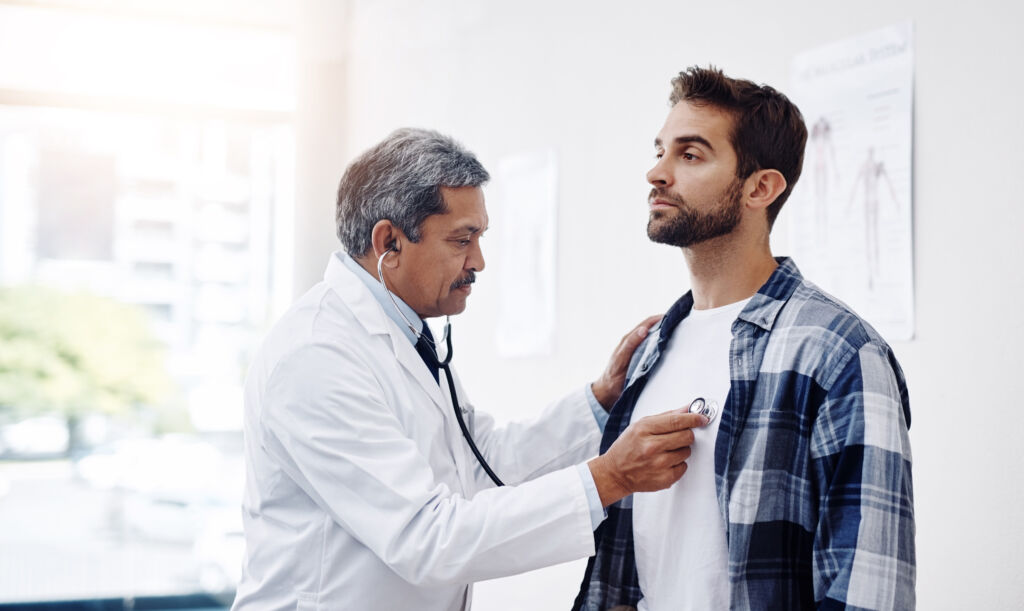Bincy Joseph, a family medicine physician at Advocate Health Care, emphasizes the importance of different types of physical exams that individuals should consider scheduling. While the annual check-up is a common practice, there are specific variations that cater to various health needs and concerns.
Dr. Joseph highlights that a routine physical exam should be conducted once every year, regardless of how one may feel. This comprehensive exam includes a physical assessment, weight check, vital sign monitoring, and an update of medical history, if necessary. The purpose of this annual visit is to proactively monitor health and address any potential issues before they escalate.
Commonly known as annual, preventive, or routine exams, these physicals serve as opportunities to address various aspects of health. During these appointments, individuals can discuss their overall health, any symptoms or changes experienced, review current medications, evaluate family history and risk factors, undergo blood tests for health indicators, and schedule health screenings and vaccinations. Additionally, mental health screenings may also be conducted to ensure holistic well-being.
The specific health screenings recommended during these exams depend on factors such as age, gender, and individual risk factors. For females, additional examinations like pelvic exams, breast exams, Pap smears, and discussions on birth control and menopause management may be included. Male exams may involve testicular examinations to check for lumps or tenderness.
It is essential to note that yearly physicals are typically covered under insurance plans with minimal or no out-of-pocket costs. However, the frequency of visits may vary based on age and health status, with individuals under 40 and in good health possibly recommended to visit every other year.
In addition to annual physical exams, there is also the option of an annual wellness visit, aimed at creating a personalized prevention plan with the provider. This plan outlines when to schedule appointments, get vaccinations, and complete screenings, tailored to individual health risks. While the wellness visit does not include a complete physical exam or preventive screenings, it is a valuable tool for long-term health management.
For individuals involved in sports, a sports physical is another type of examination to consider, especially for children participating in athletic activities. These exams focus on assessing physical fitness and health parameters relevant to sports participation.
Overall, the variety of physical exams available cater to different health needs and stages of life, emphasizing the importance of proactive healthcare and early detection of potential health issues. Dr. Joseph underscores the significance of these exams in identifying health concerns early on and facilitating timely interventions for optimal health outcomes.
Ensuring Your Child’s Health for Sports Participation
Joseph emphasizes the importance of ensuring your child’s health before they engage in sports activities to minimize any potential risks.
Comprehensive Health Assessment
During this evaluation, your child’s healthcare provider will assess various aspects such as bloodwork, behavior, nutrition, sleep patterns, developmental milestones, current medications, and vaccinations. Additionally, a physical examination and vital signs assessment will be conducted.
Preparticipation Physical Evaluation (PPE)
Typically performed six weeks before the start of a sports season, the PPE is not a substitute for the annual check-up but is crucial for identifying any health issues that may affect sports participation.
Physical Examination Checklist
It is essential to prepare for the evaluation by bringing a list of medications, noting any changes in health history, preparing questions for the provider, and inquiring about fasting requirements for blood tests. Don’t forget to bring any necessary forms, insurance information, and photo identification.
Looking for a healthcare provider for your child? Check out our recommendations for Illinois and Wisconsin residents.
Title: The Art of Mindful Living: Embracing the Present Moment
In today’s fast-paced world filled with distractions and constant stimulation, it can be challenging to truly live in the present moment. However, the practice of mindfulness offers a powerful tool for cultivating a deeper sense of awareness and connection to the world around us.
Mindfulness is the practice of paying attention to the present moment without judgment. It involves bringing our awareness to our thoughts, feelings, and physical sensations as they arise, and accepting them without trying to change or control them. By practicing mindfulness, we can learn to let go of worries about the past or future and instead focus on what is happening right now.
One of the key benefits of mindfulness is its ability to reduce stress and anxiety. By bringing our attention to the present moment, we can let go of worries and fears about the future, and instead focus on what is happening in the here and now. This can help us to feel more calm and centered, even in the midst of chaos.
Mindfulness can also improve our relationships with others. By being fully present in our interactions with others, we can communicate more effectively and deepen our connections with those around us. When we are mindful, we are better able to listen attentively, respond thoughtfully, and empathize with others’ experiences.
In addition, mindfulness can enhance our overall sense of well-being. When we are fully present in the moment, we are more likely to appreciate the beauty and wonder of the world around us. By cultivating a sense of gratitude for the present moment, we can experience greater joy and fulfillment in our lives.
Practicing mindfulness does not require any special equipment or training – it simply involves bringing our attention to the present moment with an open and accepting attitude. There are many ways to incorporate mindfulness into our daily lives, such as through meditation, mindful breathing exercises, or simply taking a few moments to pause and observe our surroundings.
In conclusion, mindfulness is a powerful practice that can help us to live more fully in the present moment. By cultivating a deeper sense of awareness and connection to the world around us, we can reduce stress, improve our relationships, and enhance our overall well-being. So why not start embracing the art of mindful living today?

